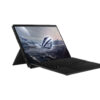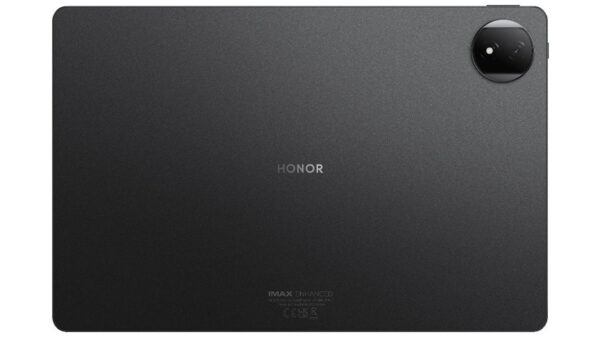While tablet computing and 2-in-1 devices will continue to evolve and awe consumers next year, 2014 will bring a rapid increase in emerging technologies such as human augmentation, speech-to-speech translation, augmented reality, gesture control and wearable user interfaces.
Wearable technology isn’t new but the last 12 months saw a burst of product releases that have captured consumer interest. Calum Chisholm, Country Manager for Intel Philippines, says that this trend will surge in the next one to three years with more wearable devices emerging in the first half of 2014.
To show how serious it is about the wearable technology market, Intel has established the new IOT Solutions Group to develop chips, such as the previously announced Quark, that which will go into wearable devices and small computers.
The Quark X1000 chips are about one-fifth the size and consume one-tenth the power of the Atom processors, Intel’s current most power-efficient line of chips.
While wearables start to proliferate, tablet computers and 2-in-1 devices (also known as convertibles) will continue to evolve and offer new levels of interaction in 2014.
Early this year, Intel launched the Haswell, the company’s 4th Generation Core Processor, which enabled a range of 2-in-1 convertible devices that can act as both a tablet and a PC.
The launch of Intel’s Silvermont microarchitecture in May introduced an innovative 22nm Tri-Gate System-on-a-Chip (SoC) process, promising to deliver significant increases in performance and energy efficiency. Silvermont delivers 3x more peak performance or the same performance at 5x lower power over current-generation Intel Atom processor core.
Another massive release for the device market was the Intel Atom Processor Z3000 series which has been designed for tablets and smartphones. Known as Bay Trail, the chip has been designed to increase battery life on high usage devices and allows manufacturers to provide thinner, lighter, and more powerful devices at a range of different price points.
Chisholm stressed that while Intel has entered the smartphone arena through partnerships with Lenovo, Acer, and Asus, the company’s top priority is to develop technology and build its network of OEMs for the tablet and 2-in-1 markets.
“We will move full steam ahead into the tablet and 2-in-1 space,” says Chisholm. “There will be a whole new wave of tablets and 2-in-1s coming from our multinational partners and local OEMs.”
Research firm International Data Corporation expects the Asia Pacific mobility market to continue experiencing strong growth in 2014 as companies across the mobility ecosystem adapt to meet the demands of the Gen-C consumers.
“The unique Asia Pacific market dynamics create the world’s most exciting mobile market. The combination of a young population, economic growth and a lack of fixed infrastructure in the developing countries make mobility central to the lives of the consumer,” says Charles Reed Anderson, Head of Telecoms & Mobility, IDC Asia/Pacific.
The year 2014 will also see the emergence of a whole new sector for home entertainment.
“From a hardware perspective it will be very interesting. Soon we will see hardware manufacturers bring true TV capabilities to All-In-One PC’s, industry leaders will embrace the two technologies and we will see a whole category created. The PC will be born into a TV, TV’s will merge into that all-in-one. It will then build into a multiple and personal device – so each member of the family has their own log in screen that brings up their own programs and intuitively predicts what that person might want to watch next based on their viewing history,” said David McCloskey, Director of Operations, Intel Asia Pacific.

Tablets and 2-in-1 devices (also known as convertibles) will continue to evolve and offer new levels of interaction in 2014.
The education evolution
Intel also predicts that within the next three to five years, the region will see a huge increase in device ownership with one device for every student increasingly being the norm. The key challenge will be providing the adult population, particularly in regional areas with the right education, devices and services to engage them.
A tablet purposely created for use in schools was launched by Intel Philippines this year. Designed by Intel Education Solutions and sold institutionally, the Intel Education Tablet aims to transform the classroom by creating a collaborative and interactive learning and teaching environment where students are more engaged and teachers are more innovative in their method of instruction.
The tablet for schools is pre-installed with applications that aim to improve students’ performance in problem solving, reading comprehension, scientific analysis, and the arts.
Earlier this year, Intel helped transform local classrooms in Davao City into interactive learning environments by training teachers and donating 25 Intel Education Tablets and solar power equipment to the Marilog Central Elementary School, providing open content mapped to the K12 curriculum. Intel engaged more schools in tablet-assisted education with the recent acquisition of 750 tablets by the Department of Education in Makati.
“There’s still work to be done on programs within schools. Simply giving children devices alone doesn’t guarantee that they will acquire the necessary 21st century digital literacy. The focus needs to be on education institutions themselves, the content they are producing – and most critically the teachers,” said Chisholm.
New innovations courtesy of Big Data
Chisholm also talked about the innovations that will emerge as a result of Big Data. Intel believes that having 15 billion connected devices in the next few years is achievable. The biggest question is around where the data will go when these devices connect and the best way to make use of that information. This will prompt a whole industry to grow around predictive analysis and raw data. Intel says Big Data will help make companies smarter, more progressive and give them a business advantage. Governments will soon follow.
2013 saw Intel launch the Big Data Innovation Center in Singapore with Dell and Revolution Analytics. It provides a platform for companies to test-run big data initiatives and proof-of-concepts for deployment. The center offers comprehensive training programs, proof-of-concept capabilities, and solution development support for big data and predictive analytics, specifically tailored to the Asia Pacific region.
Intel also announced its first venture into Big Data software with the Intel Distribution for Apache Hadoop software. Intel believes the conceptual technology can help governments prepare for smart cities and assist telecommunications companies to improve their network and revenue streams.
“Personal data analytics is a really interesting emerging area. Personal data analytics is a broad label; it includes everything from demographic data, to transactional data, behavioral data and even medical data. The opportunity is about making that data really work – to create value for consumers and companies,” said Genevieve Bell, Futurist and Director of User Experience Research, Intel.



















































































































